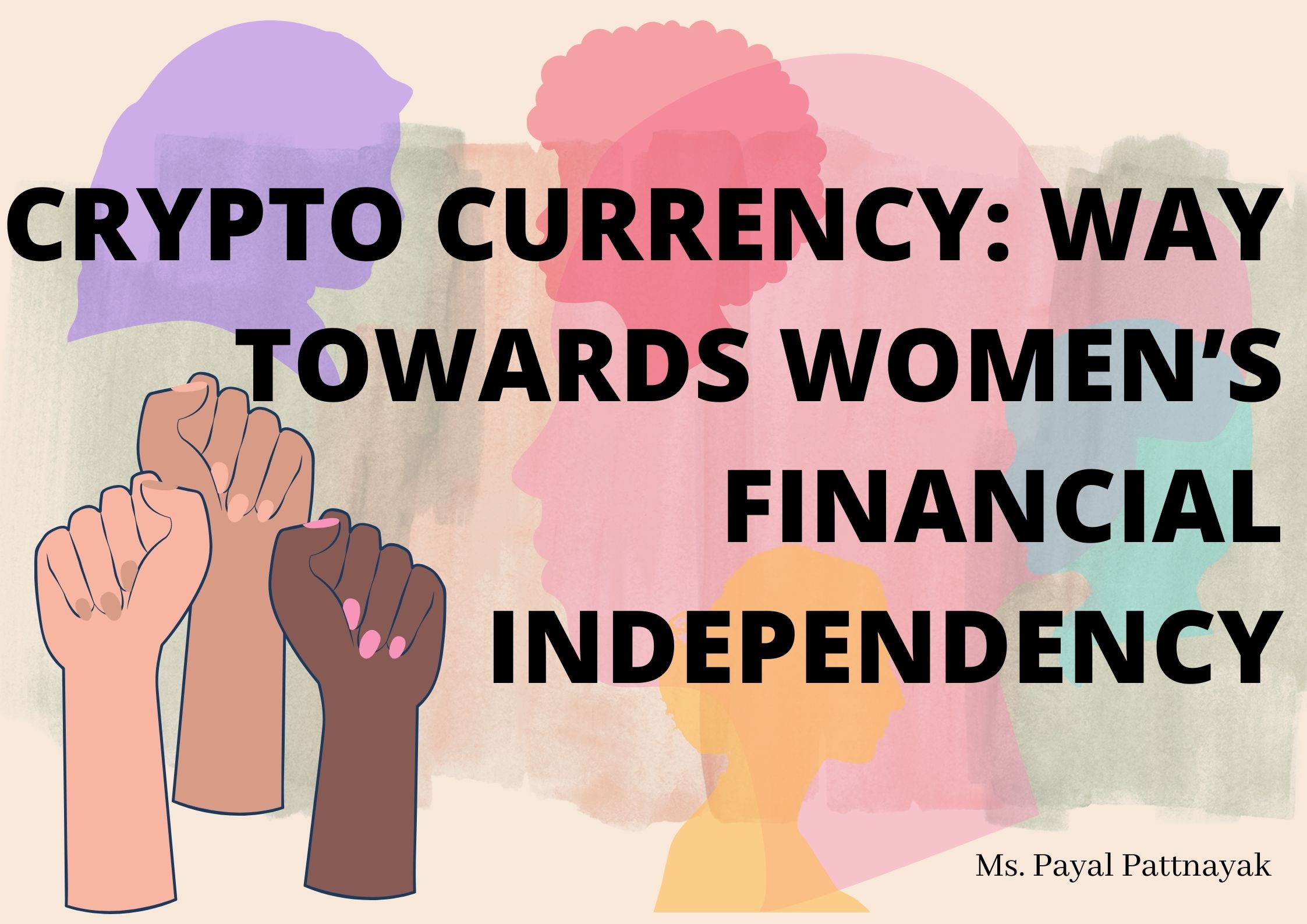Financial Independency and financial security had been a striving factor for women since ages. Recent researches has showed that there is a dynamic shift in women behaviour towards making investment decision from past two-three years, after taking backseat for years. Although, women have understood their role in Investment decision making and financial independency, yet if we look into cryptocurrency space, women still capture very small percentage.
In India, the finances are mostly handled and managed by the men in any household. In the year 2020, PayTM had conducted a live experiment to find out the control of women on the money earned by them and discovered that a very small portion of the sample had any understanding of investment decisions made. But gradually women started understanding finances and also started learning to take control over their finances. In this scenario, Cryptocurrency plays a vital role in being a key financial instrument in investment decision.
According to CDSL (Central Depository Services Limited) survey conducted last year, 76 percent of Demat accounts belonged to male investors. But with the rise of the crypto market, now over 15 to 20 percent of the investments are being done by women, and this figure is growing.
Year 2020 made a place in history for being a phenomenal year for Indian Crypto Market. The Supreme Court of India supported the legality of the Crypto currency in Indian Financial Market, due to which a steady rise can be observed in the number of women investors entering the market. The impact of this can be seen across the globe, if women investors are focused on. Grayscale showed from its study that women are eager to make investment decisions if proper education and information are provided about the asset class. According to the same study, 93% of women are ready to invest in cryptocurrency if provided with proper information.
Is Crypto Market dominated by male?
Many studies have showed that cryptocurrency remains dominated by male investors. As cryptocurrency is a combination of technology and finance, women were always underrated and underrepresented in both the areas. Another theory was that women tend to be risk averse when it comes to investments. And cryptocurrency being one of the most volatile financial instruments, women are more inclined towards traditional investment instruments over more recent and complex instruments.
As per a study by the World Economic Forum on inequality between men and women spanning across 149 countries, in almost 40% of the countries, women strive for equal access with respect to financial literacy, financial independency and investment decisions. One of the major reason for financial inequality was found to be the relative difficulty or inability for many women to open own bank accounts and transact money due to which women lose opportunities for growth and success.
A study revealed that almost 76% of female investors and 52% male investors confessed that they lack an understanding of Cryptos as a new asset class. Women generally do not try to invest in anything where they lack understanding and information about the asset class.
Women- the better crypto investors?
Factors that could make women better crypto investors are:
1. Women believe in saving – A research conducted by Fidelity Investments discovered that women save about 8.3% of their income whereas men save only 7.9% of their income. More savings are likely to lead to more diversification of investments, and to greater investments into high-return assets like cryptocurrencies.
2. Women are more successful investors – Women are risk-averse and data shows that women evaluate risks in almost everything and try to mitigate them in the best possible manner. According to a research conducted by Merrill Lynch, it is found that female investors tend to better measure risks before investing in any asset class. Therefore, female investors are more analytical and research oriented with their investments decisions. And when investing in an extremely volatile market such as crypto, their cautiousness force them to make better decisions backed by proper research about the asset class.
CoinSwitch Kuber, an app based Indian cryptocurrency market place, found that women form merely 15% of their user base. But, it observed a massive 1000% increase in its number of women user registrations in the past year.
If we talk about the preference in Cryptocurrency marketplace, another research conducted by BuyUCoin in March 2021 showed that women eventually preferred cryptocurrencies such as Bitcoin, Ripple, Dogecoin, Ethereum, and SHIBA over other options in India. The research also found that about 32.32 percent of female investors are from the age group 25-34 years and only about 4.98 percent of female traders are from the age group of 55 years and above. This survey involving nearly 4,800 women investors also showed that 18 percent of single working women take their own investment decisions in comparison to just 13 percent of married working women. So a vast majority of working women don’t take their own investment decisions.
Although India is moving ahead towards better financial inclusion, yet, most parts of rural and semi urban India still see very low participation of women in economic activities, especially with respect to investment decisions. Lack of financial awareness, low financial literacy and limited facilities act as a hindrance for these women to be financially independent.
But if we focus on semi-urban and urban areas of India, Cryptocurrency can offer a ray of hope for liberalisation of women towards financial independency, especially for those who have no access to a bank account. If proper financial literacy is provided, then the graph of female investors will go even higher. Since cryptocurrency has low barriers to entry, women can engage easily with this investment class, as to begin with, the only need here is a smart phone and internet connection. In the long run, Cryptos have the potential to be a powerful tool that can push the world towards financial inclusion while reducing the gender gap.
